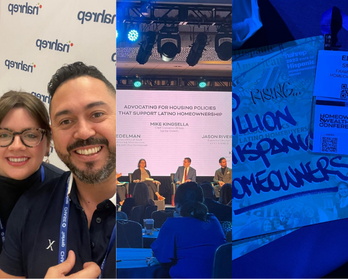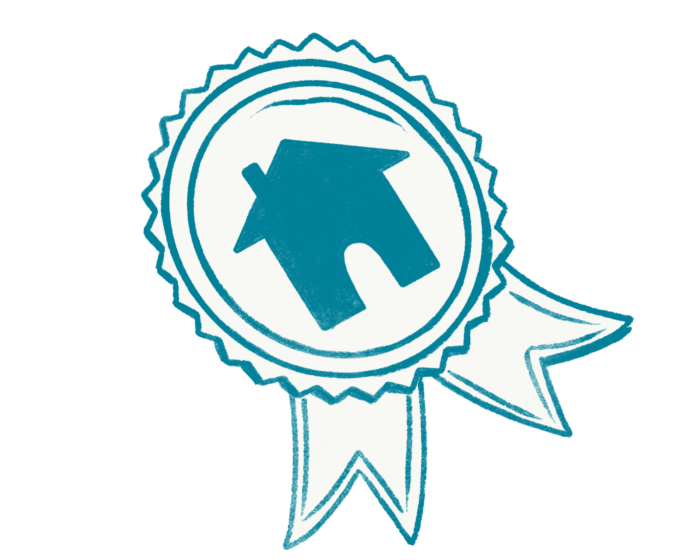Let’s say you want to tap into your home equity, but you’re not sure how much you need or exactly when you’ll need it. Have you looked into a home equity line of credit? There are pros and cons, but one of the best things about a “HELOC” is that you can borrow and pay as you go.
A home equity line of credit is a type of home equity loan, but it’s more flexible than a regular loan. You don’t have to take out (and pay interest on) a big sum all at once. It works more like a credit card. In fact, you usually access a line of credit using a credit card or checks dedicated to the account. It’s not open-ended, but you can pay off and reuse the credit again and again.
The downside? HELOCs are more complicated and typically cost you somewhat more than a lump-sum loan. Part of the cost factor is that the interest rate is usually a little higher to start with (way lower than a credit card, though), and variable instead of fixed. It could go up quite a bit before you pay off what you’ve borrowed.
Still, a HELOC might be the way to go if you:
- Have at least 20 percent equity in your home
- Want to make a series of medium-size home improvements
- Don’t need more than $25,000
- Manage your credit cards well
- Are solid financially but have a short-term cash flow issue
Read on for the details.
A line of credit is still a home equity loan
Both home equity loans and home equity lines of credit are what’s referred to as second mortgages. As with a first mortgage, you have to qualify, meet the lender’s loan requirements, and often pay for an appraisal, a credit report, and application fees.
In both cases, your home is the collateral. The lender will have a lien on your property — a legal claim on it based on the debt you owe. Foreclosure is a possibility if you fall behind on your monthly payments.
Other common characteristics:
- Interest rates tend to be a bit higher than for a first mortgage
- The interest is usually tax deductible
- The loan term is typically 15 years or less
- There could be a fee if you pay off the loan early
- The loan can be refinanced later if necessary
- You must pay off the balance if you sell your house
Remember too that when you spend home equity, you’re reversing the equity-building process. Between that and the risk that comes with a lien, many financial advisors say that the only good reason to tap your home equity is to make important repairs, or improvements that add market value. Should you really be spending your home equity?
“I didn’t want to get in over my head”
That said, let’s go back to the credit card analogy. There’s nothing terribly wrong with using credit once in a while, as long as you manage it well, paying it off in a timely manner. As opposed to letting your balance turn into a costly long-term loan.
Tina, a single teacher who owns an older home in Massachusetts, is a case study in doing a HELOC right.
She took out a $25,000 line of credit to make a series of home improvements. Some, like a roof repair, were necessary. Others, like taking down old wallpaper in favor of fresh paint, were cosmetic, but she wanted to get that wallpaper out of her life sooner rather than later. And she didn’t want to deplete her cash reserves.
“I needed to use the equity,” she says, “but I didn’t want one big loan. I knew I was going to do things in stages. I never had more than $5,000 or $8,000 on the loan at once. I would let it ride for a while, then pay it down when I had the money. I didn’t want to get in over my head, and I didn’t.”
Tina had the balance paid off not long after the 10-year draw period ended (see “How does a home equity line of credit work?” below). Plus, the interest rate was low, and her local bank had offered a HELOC with no closing costs and hardly any fees. So the loan cost her very little.
“It’s just there if I need it”
For Donna, another Massachusetts homeowner, an open line of credit has served as a safety net following the death of her husband. Before he passed away, the couple opened a HELOC to make improvements to their rental properties. They paid it off, and now, while she’s in transition, she’s keeping it open.
“We opened it for a specific purpose, but that changed,” Donna says. “I’m in the process of selling my house. It’s a cushion for me until the house sells. Knowing that it’s there has been incredible peace of mind for me.”
It’s not costing her anything to keep the HELOC open, she says. “After a lot of research and reaching out to a lot of financial institutions, we found a local bank that has been great. They don’t charge a fee. The credit is just there if and when I need it.”
How does a home equity line of credit work?
So, how do these things actually work? Like we said, a home equity line of credit is more complicated than a lump-sum home equity loan. The life of a HELOC has two phases: the draw period and the repayment period.
The draw period: Unlike a credit card, which is open-ended, a line of credit can be used only for a certain period of time. This “draw period” is often 5 to 10 years. Typically, you can access your line of credit any time by check, credit card, or electronic transfer. During this period, you’re required to make at least the minimum monthly payments.
Good to know:
- Minimum monthly payments cover only interest — it’s important to pay more, so you’re working down the principal too
- Some HELOCs require that you borrow right away
- Sometimes there’s an annual maintenance fee
- Sometimes there’s a fee every time you draw on the line of credit
- Sometimes there’s a fee if you don’t draw on the line of credit often enough
- If your home drops in value or if your finances change, your line of credit might be frozen or reduced
- Once the draw period expires, you can’t borrow any more money, even if you didn’t go up to the limit
The repayment period: When the draw period ends, a repayment period of 10 to 20 years begins. You’re required to start paying both interest and principal on whatever amount you actually used.
Good to know:
- Remember, most HELOCs have a variable interest rate, so your monthly payment can skyrocket, especially if you’ve been paying only the interest
- You can refinance into a fixed-rate home equity loan if you need to
- Some banks offer a “hybrid” HELOC that lets you convert part of your line of credit into a fixed-rate advance
Balloon payment? Some HELOCs don’t have a repayment period. Instead, you pay off the entire amount you borrowed at the end of the draw period. We suggest that you steer clear of this risky variation.




